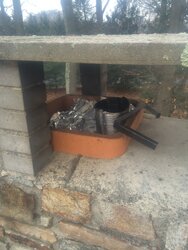Greetings all! I'm am in the middle of reading the ever popular "Advice/Review need: regency ci2600 fireplace insert risky & costly" thread. Being that it is 35+ pages long it's a lot of info/review to take in all at once.
Here's my story: Had a ci2600 installed 3 days ago. The installer notified me that the custom backing plate that I needed was not ready but could install anyway, to allow me to heat during this impending blizzard (I live in NE Maryland). So stove was installed sans backing plate and come to find out sans flue cap, it won't be coming in till next week. (Attached are pics of stove and jimmy rig flue "to get me along till final parts come in").
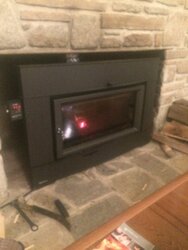
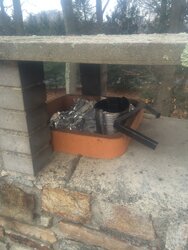
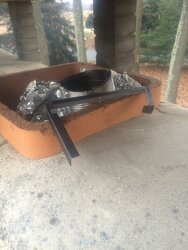
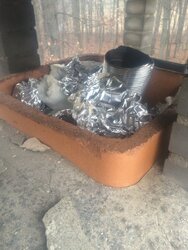
My question is this: is it kosher to install/run the stove with out a backing plate? Kosher to install/run with a jimmy rigged flue with no cap? Even temporarily? This snow/wind/blizzard apocalypse has me worried. Should the installer just have leveled with me and said sorry the parts didn't come in time to properly install?
I ask this because the stove is not adaquetly heating my home (main floor rancher, roughly 1200 sq ft). Thermometer exactly 16 feet away on kitchen island reads 62 degrees, never been higher. Stove fan on high and feels hot coming out (avg 200 degree via inferred thermometer). House thermostat is not more than 30 feet from stove and won't get above 56 degrees. Electric heat pump running all the time. Is my house really that inefficient/drafty? Built in 78.
Wood being burned is seasoned 1+ year oak, cherry, Osage orange. My good friend is burning the same supply with no problems (not same stove).
Any advice, tips, tricks, information is greatly appreciated!
Here's my story: Had a ci2600 installed 3 days ago. The installer notified me that the custom backing plate that I needed was not ready but could install anyway, to allow me to heat during this impending blizzard (I live in NE Maryland). So stove was installed sans backing plate and come to find out sans flue cap, it won't be coming in till next week. (Attached are pics of stove and jimmy rig flue "to get me along till final parts come in").




My question is this: is it kosher to install/run the stove with out a backing plate? Kosher to install/run with a jimmy rigged flue with no cap? Even temporarily? This snow/wind/blizzard apocalypse has me worried. Should the installer just have leveled with me and said sorry the parts didn't come in time to properly install?
I ask this because the stove is not adaquetly heating my home (main floor rancher, roughly 1200 sq ft). Thermometer exactly 16 feet away on kitchen island reads 62 degrees, never been higher. Stove fan on high and feels hot coming out (avg 200 degree via inferred thermometer). House thermostat is not more than 30 feet from stove and won't get above 56 degrees. Electric heat pump running all the time. Is my house really that inefficient/drafty? Built in 78.
Wood being burned is seasoned 1+ year oak, cherry, Osage orange. My good friend is burning the same supply with no problems (not same stove).
Any advice, tips, tricks, information is greatly appreciated!
Attachments
Last edited by a moderator:


